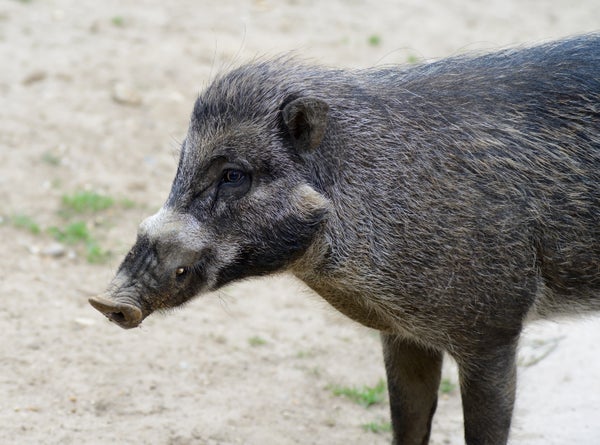Part of the Museum of Natural History in Paris, the Jardin des Plantes, on the left bank of the Seine River, hosts a collection of galleries and gardens. A couple of miles away, the larger museum also includes the Museum of Mankind, which is,in part, an exploration of what it means to be human. There, like in many other museums worldwide, you can view a collection of stone tools used by the earliest humans. Tool use was long believed to be unique to our species—a defining feature, like language. Utilizing objects to achieve goals is not just a demonstration of advanced cognitive capabilities; it is largely through our symbolic and material tools that we share and transmit culture.
In 1960 primatologist Jane Goodall observed wild chimpanzees making and using tools. A connection between humans and other animals, in how we think and learn, was captivating news. Since then, scientists have gone on to establish tool use in a relatively small number of other species. And observations of learning to use a tool from other group members, rather than instinctively, have been even more rare—until now.
The Jardin des Plantes is also home to a special couple, Priscillaand Billie. Along with at least one of their daughters, these Visayan warty pigs—residents of the garden’s zoo—are the first in any pig species to be identified using tools and, even more remarkably, to apparently transmit this behavior through social learning.
On supporting science journalism
If you're enjoying this article, consider supporting our award-winning journalism by subscribing. By purchasing a subscription you are helping to ensure the future of impactful stories about the discoveries and ideas shaping our world today.
The discovery was made by chance by ecologist Meredith Root-Bernstein, who was watching the family from outside its enclosure. Priscilla, working on building a nest, picked up a piece of bark in her mouth and used it to aid her digging. For six weeks Root-Bernstein frequently returned to the zoo to try to again catch her in the act. Although she didn’t do so, she did notice the digging tool moved among different areas of the enclosure and always near a recently constructed nest. Intrigued, Root-Bernstein, together with her colleagues, set up a series of observations to understand if Priscilla and the other pigs were indeed using sticks and bark as tools and, if so, under what conditions. The results from the project were published in September.
For the initial study, the researchers asked if they could observe the pigs using stick tools to help them dig and forage for food. They set up two conditions rotating over nine days: one where the pigs’ daily meals were placed next to a pile of dry leaves and one where they were mixed together with the leaves. For a third, control condition, the food was simply set out as usual. No clear instances of tool use were observed across these different feeding conditions. So the authors waited until the next nest-building season to see if they could instead observe tool use in the original context.
For two weeks, members of the research team, video cameras in hand, returned to the zoo in the afternoon (prime nest-building time) and observed the pigs for around two hours. On three occasions, Priscilla was recorded using a stick or piece of bark as a tool. Each time, the behavior was related to constructing a nest and, moreover, was specifically seen at the end of an established sequence in the building process. Once, one of Priscilla’s daughters was also recorded using a tool. After she eventually dropped the stick, Billie picked it up and also, but clumsily, attempted a digging action . Could the problem for Billie have been that the stick was hard to pick-up and/or dig with?
In the final study, Root-Bernstein and her colleagues put a variety of spatulas in the enclosure to see if perhaps the pigs would take advantage of easier-to-use tools. They also observed, more systematically, the pigs’ social dynamics, as well as the stages of nest building. Priscilla was clearly seen using a tool seven more times, two of which were with a spatula. There were also a few other possible but more ambiguous instances for both her and her daughters.
During this period, the scientists also tracked more than 70 agonistic interactions between individuals, establishing Priscilla as the least dominant female. This result is significant because in other species, it is usually not the dominant members who are credited with innovation. Across observations, Priscilla seemed to be the tool-use star, leading the authors to believe that she can be credited with first using the bark and sticks as tools, a behavior that was then social transmitted to the other family members. Of course, there are different possibilities: for example, Priscilla, who was not Parisian-born, might have learned tool use from the pigs in her original birthplace. In any case, more research is needed to see if this unique behavior can be seen in other captive and wild pigs. Despite their reputation as lazy, research has established that pigs are actually highly intelligent. And as this study shows, when it comes to our understanding of their cognitive and social abilities, the opposite of Porky Pig’s famous last line is true: that’s not all folks!

